Wander.alは、サービスの向上のためCookieを使用しております。当社のウェブサイトを利用することにより、Cookieの使用に同意するものとします。 Cookieポリシー.

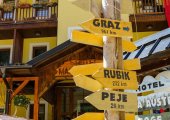
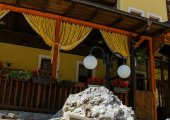




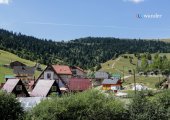
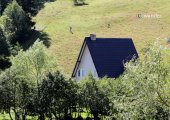
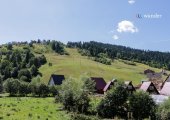

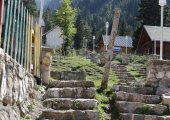
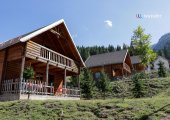
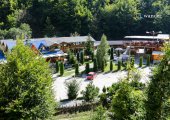
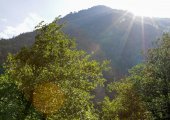
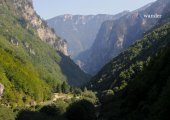
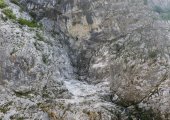
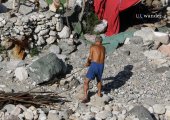
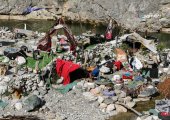
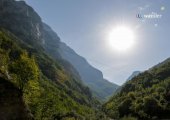
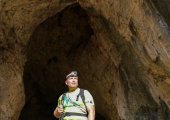
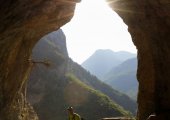
























Rugova Canyon is a river canyon in the western part of Kosovo near Peja, in the proximity of Bjeshkët e Namuna (Cursed Mountains), close to the border with Montenegro. With a length of 25 km (16 mi) and a depth up to 1,000 meters, Rugova canyon is considered to be one of Europe's longest and deepest canyons. It was created by the water erosion and the removal of the glacier of Peja.
In 1985, Rugova Canyon was declared as protected monument of natural heritage due to its geological, hydrological, landscape, speleological and botanic values.
The canyon in the third kilometer from Peja starts to narrow, up to its ninth kilometer where slowly it starts to open and continues to narrow in very small sequences creating a valley at the end of which flows the river of Peja, Bistrica, and it then continues to narrow again in an outfall along the western road of the region connecting Kosovo with Montenegro, over the Cakor pass. The average quota of the valley is 650-1000 meters which is mainly inhabited in its east side but also in the west side during the summer months.
The river Peja Bistrica which is created from the wells collected in different parts of Rugova with a length of 56km and rapid intensity of flow. It separates the canyon into two parts and create magnificent view of colossal rocks reaching the peak up to 2000m with a lot of waterfalls and caves. There are few waterfalls and many water-springs, like Uji i Zi (Black Water), Kroi i km-5 (5-th Km Spring) and so on. In the sixth kilometer there is a 25 meters high waterfall that springs out from the cliffs in the southern side and drops to the river. Many caves, most of them still unexplored, like Gryka e Madhe (Great Canyon-cave system; until now only around 11km explored), Shpella e Karamakazit (Black Scissors cave) and Shpella e Kallabes (Kallaba Cave; were are found the archaeological remains of ancient humans), and hundreds of others caves waiting to be explored. A well known arch bridge connects the canyon, in front of which is a rock with a drawing (athlete) that is thought to be from Pelasgian period.
The cave Gryka e Madhe (Great Canyon-cave) is located in the 8th kilometer of Rugova Canyon, in the left side, about 60 m above the Lumbardhi river, in the altitude 637 m.
Researches in this cave have started since 1993, by some Slovak speleologists, who randomly were traveling to Macedonia through Rugova canyon, even though this cave was known for local inhabitants since long time ago. The researches in the cave continued in the period 1966 – 2007, with a break time 1998 – 2001. During the last expedition research it is identified that corridors are to oval profile, homogeneous and to different dimensions, which have the character of a continuously underground canyon with high walls. The highest levels of the cave do not have sediments, but they are riffraff of the sand, whilst the lower levels are characteristic for large and circle shape rocks. Five levels are researched so far in the cave. The first is river level, which is quite active. This level is high up to 66 meters starting from the entrance. It has a dynamic escalation and in some places to dangerous. Through some small channels in the tube shapes, from this level can be passed to the river. In this area is identified sediment or riffraff of different colors. Due to the terrain configuration and the high risk to enter inside, the cave is saved by the anthropological impact and it is in good state. Recently are taking place researches from different teams of experts by Slovakia, Bulgaria, the NGO “Aragoniti” and KEPA.
Rugova Canyon offers great opportunities for hikers, rock-climbers and cave explorers. In this canyon recently was built “Via Ferrata” or the “Iron Trail”, the first and the only in Balkans, which enables climbing rocks for each one of the curious passersby.
Rock faces created by the nature gives undesirable beauty to this mountain feeling not only from walking around but also for doing a rock climbing activity. For passions of climbing and to all adventure people who like to feel adrenaline in Rugova mountain now there are 8 rock climbing sectors with proxy. 40 bolted routs with different length and difficulty. The first routs starts only 3km far from the center of city of Peja in the entrance of the canyon. The rocky trail starts from the Queen’s Cave.
Source: Wikipedia.org